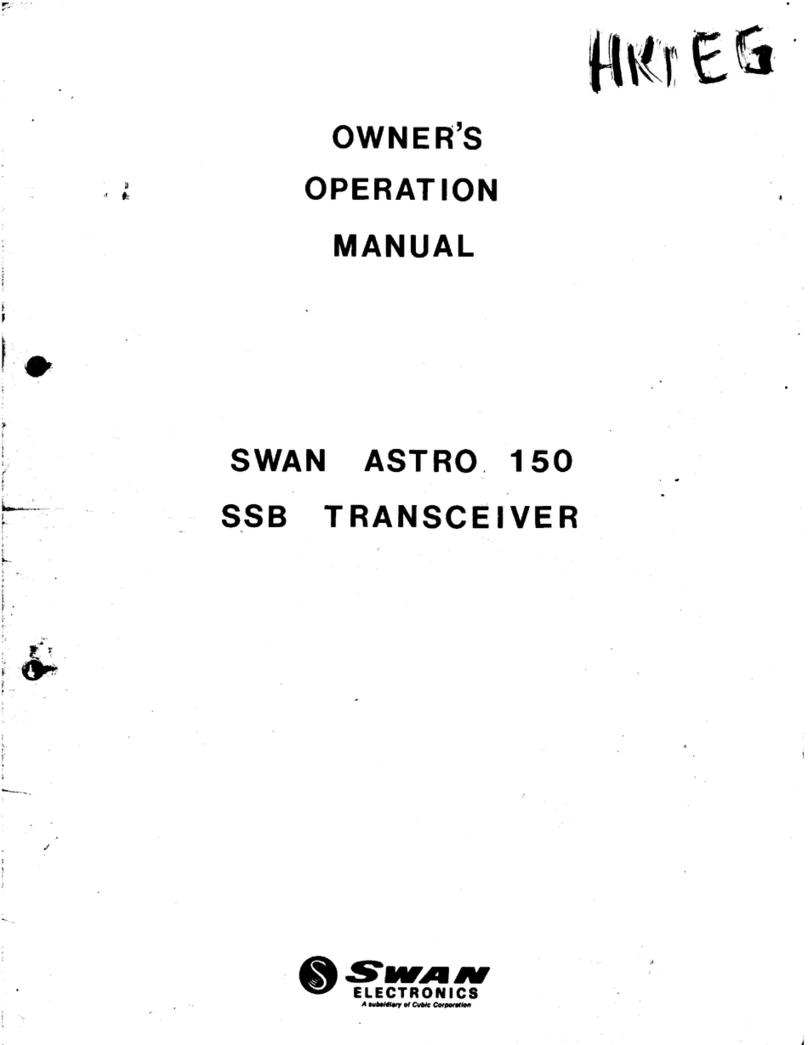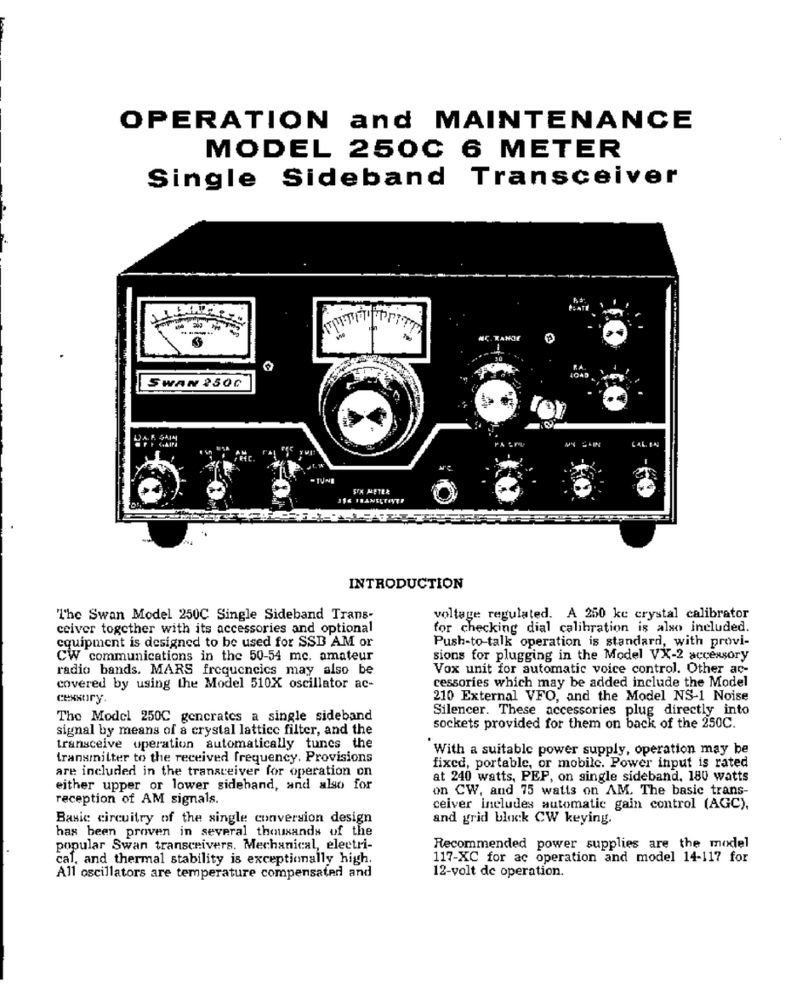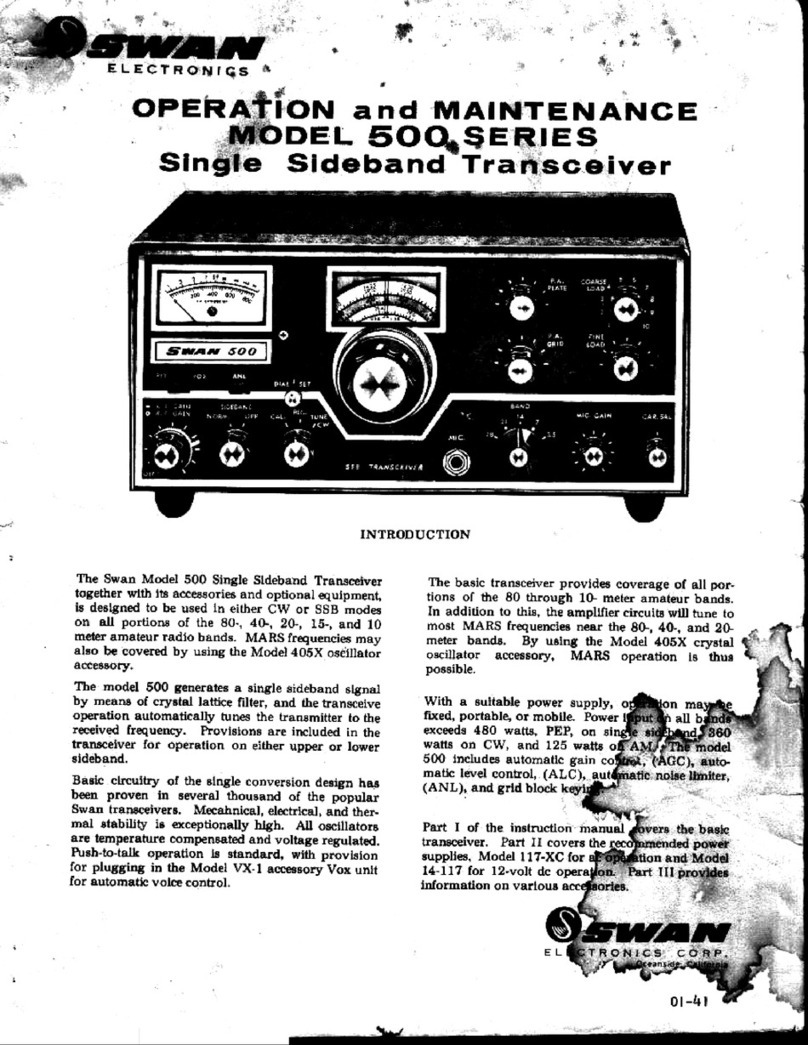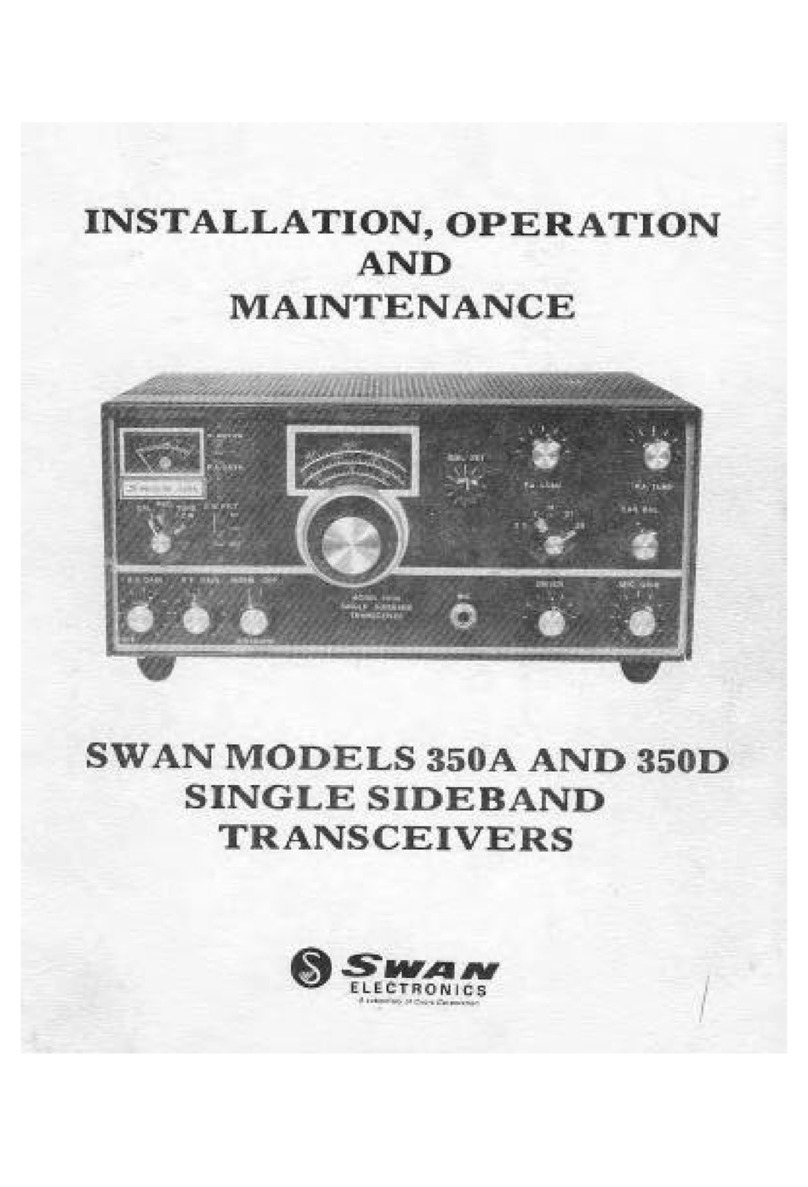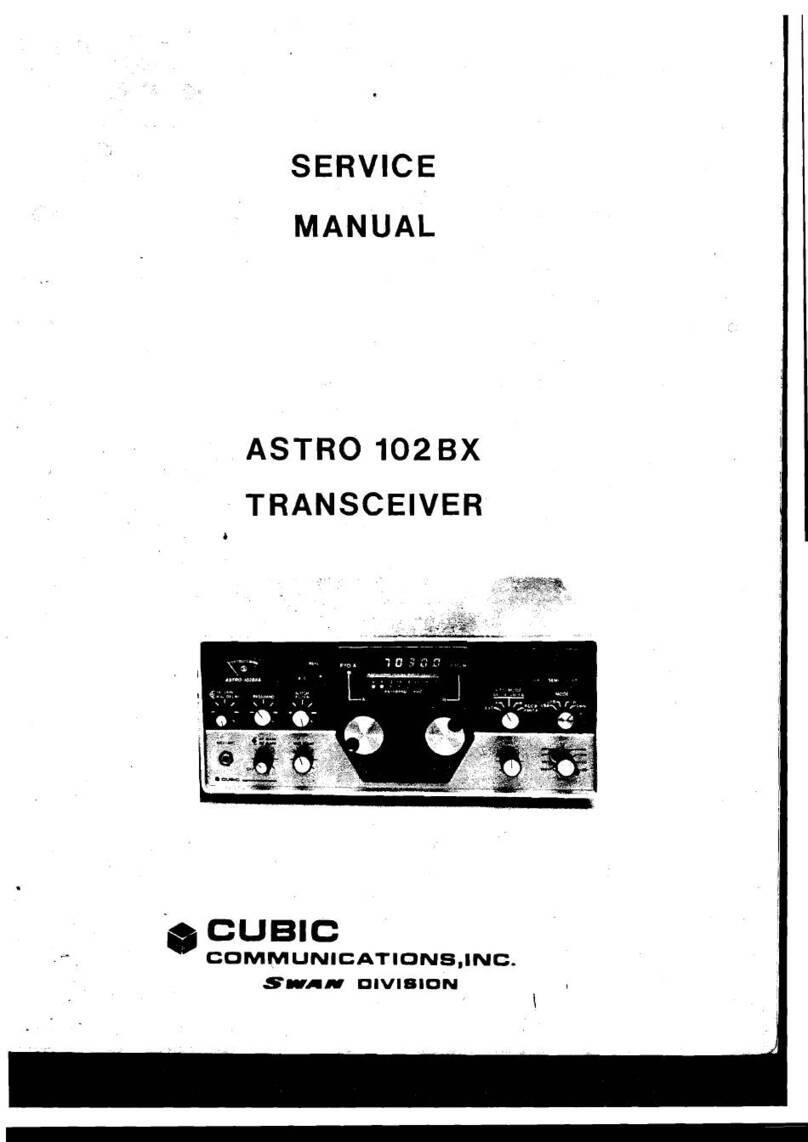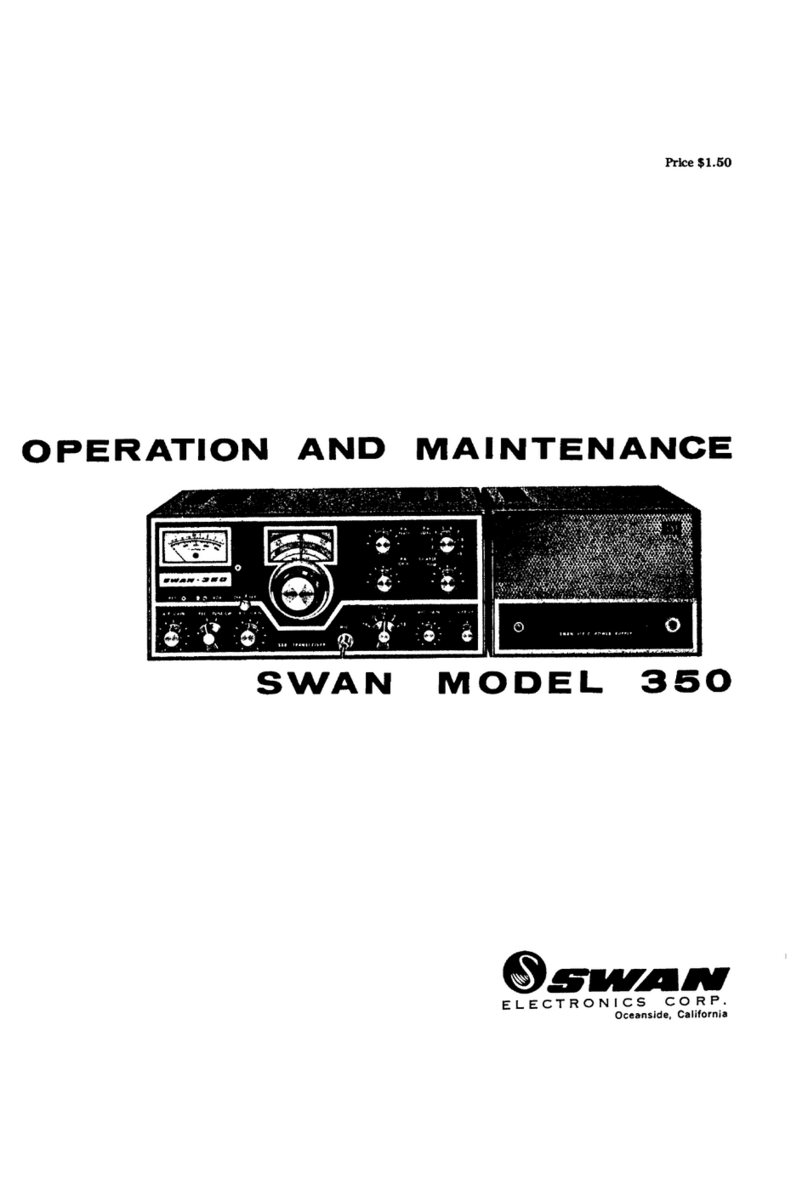1 MODEL 4OO
TRANSCEIVER
A. Circuit Theory (Cont)
Frequency Control Unit is deterrnined by
circuit elements which are far removed
frorn any heat source, and the voltage
regulation is very precise to the transis-
tor oBcillator, frequency stability is
extiemely good.
Automatic Cain Control, (AGC) is pro-
vided by the AGC Amplrfier/Detector,
VlI, which provides an AGC signal for
control of the gain of V6, Receiver RF
Amplifier, V7, Receiver Mixer, and V9,
TRANSM]T AND RECEIVE SWITCH]NC
AII transmit and receive ewitchrng i6
performed by relays Kl and K2. In
TRANSMIT position, only those tubes
that opelate in the transmit mode a!e
operative, aU others being biased to cut-
off through the relay contacts, In the
RECEM position, with the relay de-
energlzed, the tubes that are norhally
used only in tran3mittiDg are cut oft in
the sarne manner. Relay K2, which
when de-energized feeds signals frorn
the output pi-network to the receiver,
and is used also to control any external
switching. In the TRANSMIT po3ition,
the meter indicates the cornbined cathode
current oI the two Power Amplifiers.
In the RECEM po6ition, it indicates the
voltage acro6s R902 in the cathode of the
Second
IF Amplifier, V9, which is
iDversely proportional to the AGC volt-
age used to control the gain of the tube.
Thus the S-Meter reads le{t to right on
transmit, and right to left on receive.
POWER RATING
The Swan 400 is capable of 400 watts,
PEP input under steady two-tone te6t
.onditions, when operated with any of
the recommended power supplies. The
peak envelope power, when voice modu-
lated, i5 considerably more, tyPically
500 \ratts, or rnore,
Recommended power supPlies produce a
no-load plate voltage ol approximately
925 volts. Under TUNE conditions, or
CW operation, this voltage rnay drop to
as Iow as ?20 volts. Under steady state
two-tone modulation, the voltage will
drop to apploxirnately 750 volt3, If Power
Amplifier idling current is 50 rna, and
two tone plate current, ju8t before flat-
topping, is 3?5 ma, the peak two -tone
cullent will be 560 rna. The PEP input
wiu then be ?50 volts x 560 ma = 420 watts,
Under voice modulatio!, beca[rBe average
power i6 considerably Iess' the Pow€r
Amplifier plate and screen voltages will
be mainta)ned hiSher, even during voice
peaks, by the power supply filter capaci-
tors. Peak voice plate cu!rent will thele-
fole also be higher than with two-tone
test conditions. Under typical operatinS
conditions, peak plate current befole
flat-topping will be 625 lna at 800 volts,
to result in a peak envelope power inPut
of 500 watt8.
Reading6 ol cathode current would not
reflect this 500 watt power inPut' how-
ever, because oI the dampiDg in the
cathode current meter. The meter damp-
ing i6 such that the rneter i3 unable to
respond to variations oJ cathode current
in the audible range. Cathode current
readings under normal voice input, should
not exce€d approximately I50 to 175 rna.
POWER AMPLIF]ER PLATE DISSIPATION
There is olten a mi sund€r standing about
the plate dissipation of tubes operated as
AB ampliliers under voice modulation,
In the Swan 400, while in the transmit
position, and with no modulation' the plate
voltage will be 890 vo1te, the plate current
50 rna, and the power input will be 50 watts.
